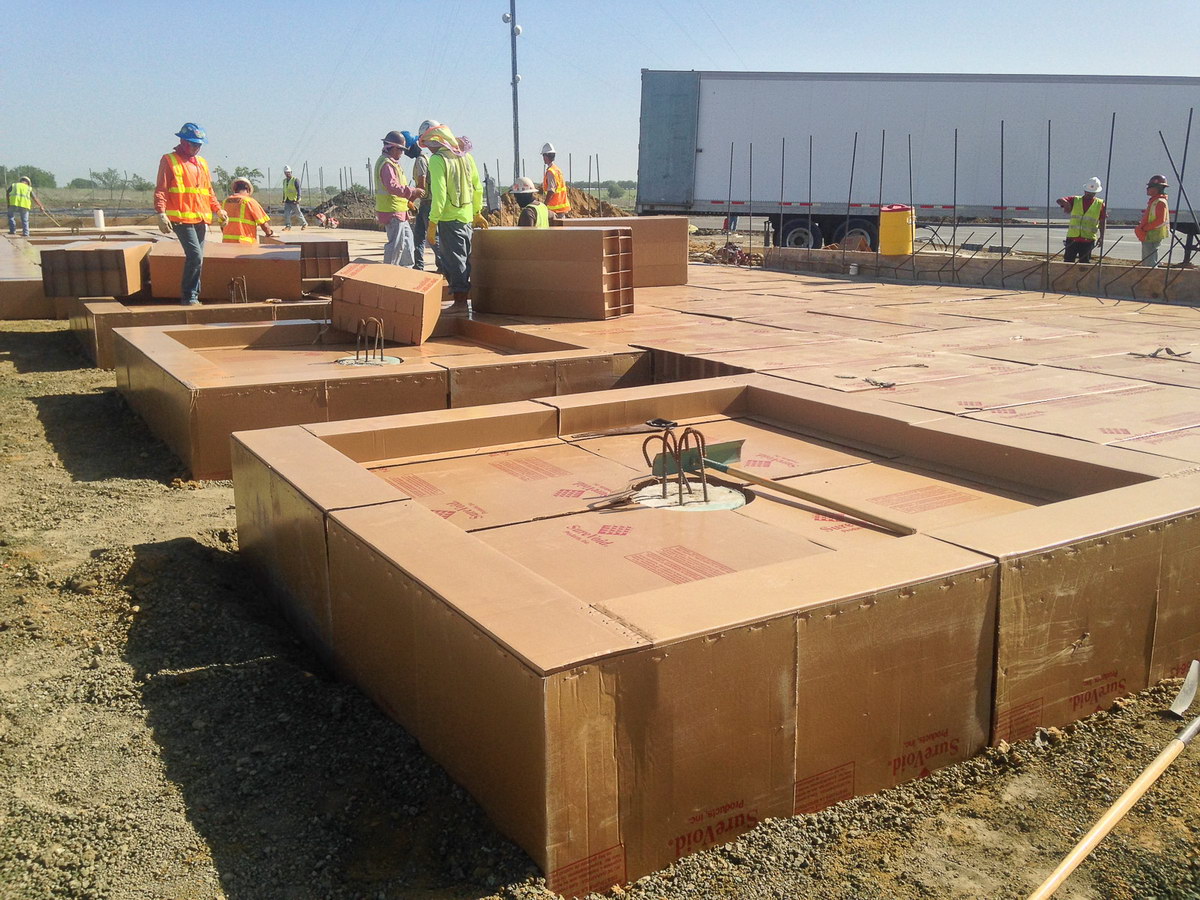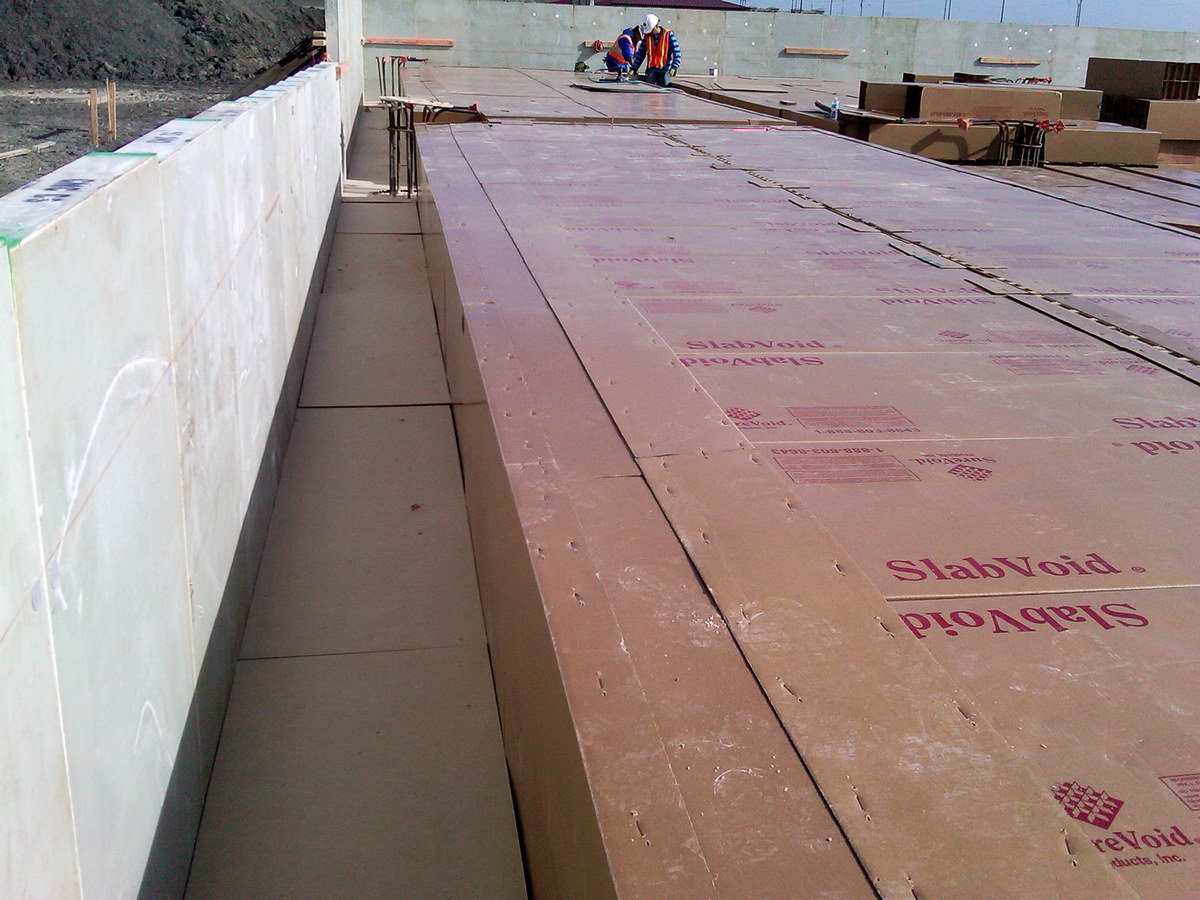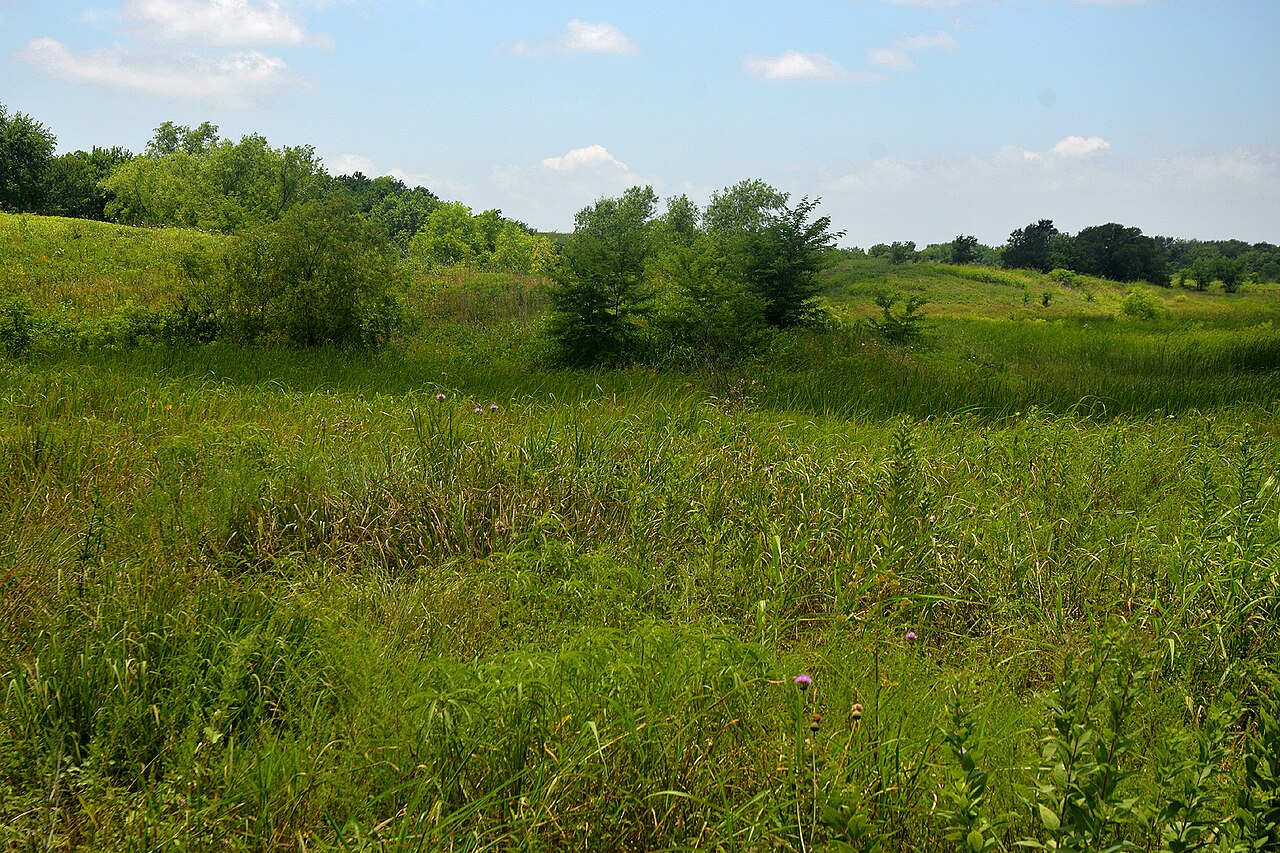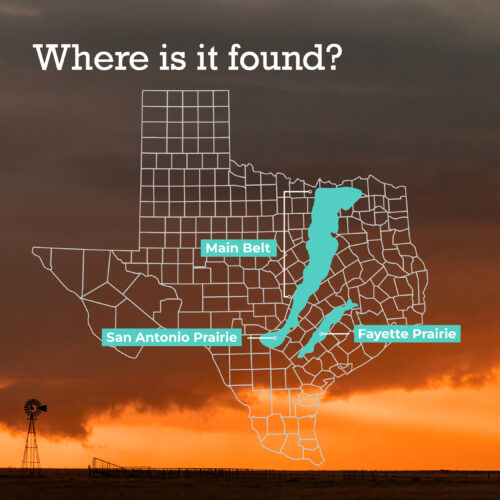From an agricultural standpoint, Blackland Prairie soil is among the most mineral-rich in the world. But that same richness comes with a caveat—its composition can exceed 60% clay, making it one of the most challenging soils to build on. Highly expansive and reactive to moisture, Blackland Prairie soil is notorious for causing long-term damage to structures.
Spanning over 12.6 million acres in Texas, as well as areas within neighboring states, this soil regularly swells beneath structures, leading to cracking and structural shifts—sometimes years after completion. Post-construction fixes are often too late or too costly to implement. For structural longevity, addressing Blackland Prairie’s expansive nature during site planning is critical—well before the first concrete pour. [1]

What Is Blackland Prairie Soil?
Blackland Prairie soil, also known as Houston Black soil, is so named for the Texas landscape it lies beneath. The Blackland Prairies are known as some of the richest soils in the world; today, 99% of the 12.6 million acres in Texas are under cultivation. [2]
The soil itself is dark gray to black, with significant calcareous (calcium carbonate) deposits. It is heavy, often described as “sticky,” and typically alkaline in nature. Specifically in Alabama, Blackland Prairie zones are the only areas with alkaline (soil pH> 7.0) soil conditions. [3] [4]
Although Blackland Prairie soil may be some of the most valuable agricultural land in the US, thanks to the rich mineral content, it has proven challenging for managing run-off, erosion, and construction.
The National Cooperative Soil Survey described its runoff potential as “high” on slopes under one percent grade, and “very high” for slopes up to eight percent. This runoff potential has led to significant erosion across the region. [5]
Furthermore, Blackland Prairie soil’s significant clay makeup also means water is very slow to permeate. This characteristic gives it a high shrink-swell potential, making it especially challenging to build on.
As explained by the National Cooperative Soil Survey, “Water enters the soil rapidly when it is dry and cracked, and very slowly when it is moist.” Rapid permeability means rapid soil expansion and a very real potential to exert tremendous PSI outward and upward as it does so. The shrink-swell behavior of Blackland Prairie soils exerts upward pressure on concrete, leading to foundation movement, cracking, and long-term structural damage to the buildings above.
Houston Black Soil, a Subtype of Blackland Prairie
Several subtypes exist within the wider Blackland Prairie ecosystem, including Houston Black, locally called “Black Gumbo.” This type contains a calcareous clay content between 46 and 60 percent.
According to the Soil Science Society of America, Houston Black Soil “is known worldwide as a classic example of a Vertisol, a soil order which is a soil high in a particular type of clay called smectite.” Like other soils with a high smectite content, Houston has a highly expansive nature. [6]
Where Is Blackland Prairie Soil Found?
Most information about Blackland Prairie soil focuses on the Blackland Prairies, a temperate grassland ecoregion in Texas. This includes four distinct areas: [7]
- Houston Black-Heiden-Wilson
- Frelsburg-Latium-Crocket
- Frelsburg-Hallettsville
- Frelsburg-Bleiblerville-Carbengle
The largest area, the Houston Black-Heiden-Wilson zone, covers a narrow strip of land from roughly San Antonio, traveling north into Dallas-Fort Worth. This belt extends northeast to southwest from the Red River in North Texas to San Antonio. It travels through Dallas-Fort Worth, including portions of Collin, Dallas, Ellis, Hunt, Kaufman, Navarro, and Rockwall Counties.
The three Frelsburg areas follow the same trajectory but are split into additional formations, including the Fayette Prairie (east-central Texas) and the San Antonio Prairie (south-central Texas).
Although Texas is perhaps most famous for its Blackland Prairie ecoregion, this soil type has also been noted in nearby southern states, including the Black Belt in Alabama, Mississippi, and Arkansas.
Why Does Blackland Prairie Soil Matter for Construction?
There is a reason why Texas has a strangely high concentration of foundation repair companies. Blackland Prairie and related soil types have made the state a risky place to build, at least for foundations and concrete construction.
As mentioned, Blackland Prairie soil is highly expansive because it contains substantial clay content, specifically smectite. Classified as Vertisol, it has a severe shrink-swell potential, cracking in dry weather to form large cracks up to 4 inches wide and 6 feet deep. Saturated expansive soils can exert thousands of pounds of pressure on adjacent slabs, beams, walls, and piers, causing cracking, shifting, and costly foundational damage, even years after project completion. [8]
Because of this high shrink-swell activity in response to moisture, Blackland Prairie soil poses a significant challenge for construction—especially for data centers, warehouses, and large-scale industrial and commercial projects now expanding into rural areas of Texas.
Solutions for Building on Blackland Prairie Soil
There are a handful of pre-construction solutions for building on highly expansive soils like Blackland Prairie and Houston Black: overexcavation, the injection of chemical stabilizers, or the installation of below-slab void forms to create a permanent space between structure and soil.
The first two mitigation strategies are costly, often prohibitively so. In part, this is because Blackland Prairie soils have a high plasticity rating, between 14 and 54, and are extremely cohesive, making them poor candidates for overexcavation. [9]
When wet, they become sticky and unstable, complicating excavation and compaction. When dry, they harden significantly, increasing labor and equipment demands. Even after removal and replacement, their shrink-swell behavior can still cause structural issues due to future moisture-driven volume changes.
Instead, structural engineers utilize void forms to create a void space beneath structures that is a protective buffer between the swelling soil and the slabs, piers, beams, and walls. This space allows expansive clays to heave without exerting damaging pressure on the surrounding concrete.
The void space and void form design are specified based on the site conditions and project specs, to prevent shifting, cracking, and foundation damage for the duration of the structure’s functional lifespan.

Smart Solutions for Building on Blackland
Blackland Prairie soil may be prized for agriculture, but its expansive nature makes it one of the most difficult soil types to build on. With high clay content and severe shrink-swell potential, it presents long-term structural risks if not properly addressed from the outset.
For any project in this region, understanding the soil’s behavior—and choosing the right mitigation strategy—is essential for lasting performance and structural integrity.
With locations throughout Texas and a logistics network serving North America, VoidForm’s systems are the most effective way to mitigate the risks of expansive Blackland Prairie soils.
Easy to order, with end-to-end support, protect your project on Blackland Prairie soil with VoidForm.

- Texas State Historical Association. (2019, December 4). Exploring texas grasslands: Diversity, history, and conservation. https://www.tshaonline.org/handbook/entries/grasslands
- Texas Blackland Prairies: EBSCO. EBSCO Information Services, Inc. | www.ebsco.com. (2022). https://www.ebsco.com/research-starters/earth-and-atmospheric-sciences/texas-blackland-prairies
- Blackland Prairie Ecological Region. Texas Parks & Wildlife. (n.d.). https://tpwd.texas.gov/landwater/land/habitats/cross_timbers/ecoregions/blackland.phtml
- Gamble, P. by: A. (2024, August 20). Alabama soils: Blackland Prairie. Alabama Cooperative Extension System. https://www.aces.edu/blog/topics/healthy-soils/alabama-soils-blackland-prairie/
- Houston Black Series. Official Series Description – HOUSTON BLACK Series. (2017, August). https://soilseries.sc.egov.usda.gov/OSD_Docs/H/HOUSTON_BLACK.html
- Houston Black – Texas State Soil. (n.d.). https://www.soils4teachers.org/files/s4t/k12outreach/tx-state-soil-booklet.pdf
- USDA. (2023, August). USDA. General soil map of Texas. https://www.nrcs.usda.gov/sites/default/files/2023-08/Texas%20General%20Soil%20Map.pdf
- Potter, K. N., & Gerik, T. J. (2001). The Vertisols of Texas. https://www.cabidigitallibrary.org/doi/pdf/10.5555/20083014480
- Capello, S. V., & Allen, P. M. (2008). TRWD. Modeling Channel Erosion in Cohesive Streams of the Blackland Prairie, Texas at the Watershed Scale. https://www.trwd.com/wp-content/uploads/2019/11/5.-CC-Bank-Pin-Study.pdf




